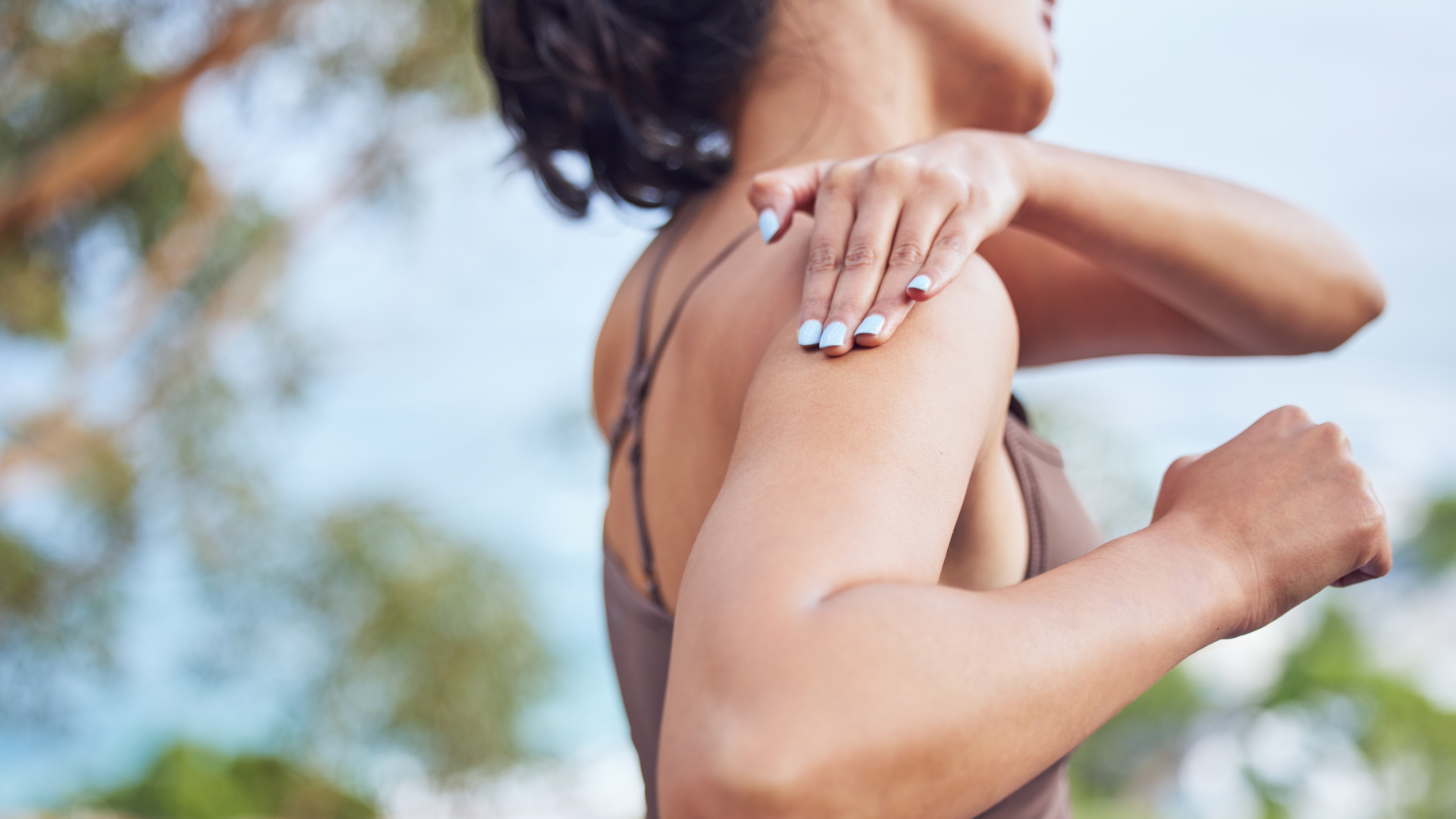
When you spend your days scaling mountains on belay and hurtling down them on skis, you’re bound to experience a few bumps and bruises along the way. My first serious outdoors injury occurred not long after I moved to Colorado in 2009. I was racing my bike down a steep, winding road in the Rockies when I hit some gravel and then next thing I knew I was on the ground.
Spurred by adrenaline, I leapt up and got myself and my bike onto the side of the road in case a car came along. As I did so, I could tell something wasn’t right with my right arm. My collarbone was sticking out at a funny angle and while I waited for my friend to come and pick me up, I became convinced I’d broken it. As a yoga teacher and rock climber, this was bad news.
I headed for the ER where a quick examination revealed my instinct was wrong. I’d actually separated my shoulder joint. The doctor explained I had torn the ligaments connecting my collarbone to my shoulder blade, an injury also known as an AC separation, shorthand for acromioclavicular joint separation. Shoulder separations can range from mild (spraining the ligaments) to severe (also involving joint dislocation), and they're common injuries among active folk as a result of falling.
At the time, the diagnosis felt devastating, in part because I was only 27 and had never had a big injury before, and also because I had just moved to the Rockies from the concrete jungle of Manhattan and was pretty enthusiastic about getting outdoors as much as possible. If you’ve just experienced the same injury, you might be feeling pretty blue, but 15 years on, I’m got back to full strength and learned a lot along the way.
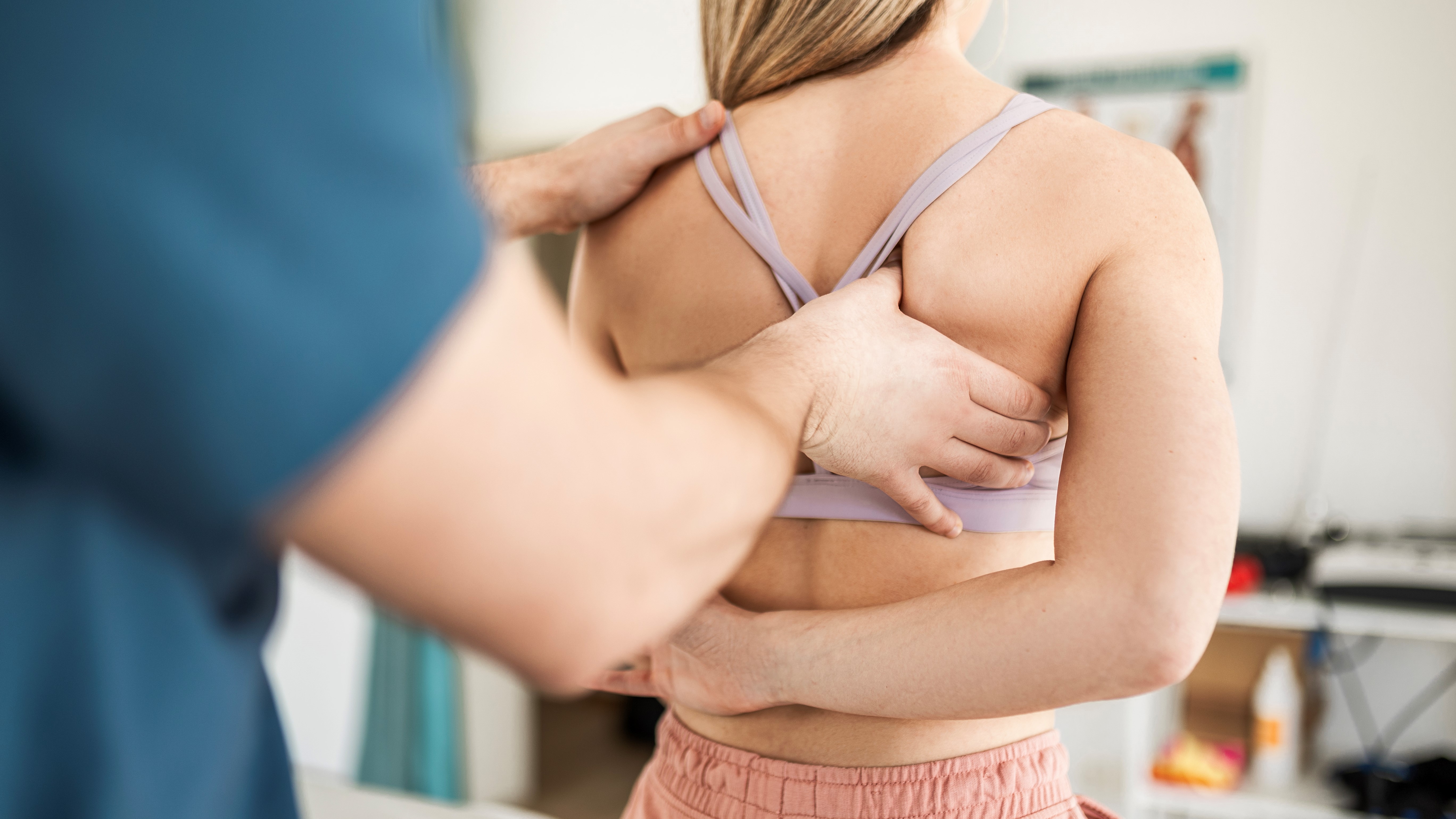
1. You probably won’t need surgery
I separated my shoulder in Vail, Colorado, which is practically the world capital of joint surgeries. Blow your knee out on the hill and you might have your ACL repaired the very next day at Vail Health, which is conveniently situated at the bottom of the ski slopes.
Surprisingly, however, there wasn’t an army of scalpel-wielding shoulder surgeons lining up to reattach my ligaments. Though very extreme shoulder separations with complications may be treated with surgery, it’s actually not that common to have your AC joint operated on, unless you’re a professional hockey player. Chances are, you’ll get sent home with a sling and a prescription for several days of icing.
2. Don’t get too dependent on your sling
The traditional approach to healing from a soft tissue injury is the RICE protocol, which entails briefly resting your shoulder, and you’re not likely to want to go bouldering tomorrow anyway. You’ll be given a sling to wear for a week or so, and if you’re a bit scared, you might get overly dependent on it like I did.
However, the sling just helps you with the pain for the first few days, since the weight of your arm hanging down is uncomfortable. Long term immobilization of the joint probably isn’t conducive to healing, as studies show patients tend to heal faster with joint mobilization instead.
I was really scared to hurt my shoulder again, so I wore my sling for a bit too long until my PT noticed that it was forcing me to hunch over and told me to stop before I ended up throwing my back out too. Unless otherwise instructed by a medical professional, just use your sling for just the first week or so and then get used to life without it before your posture is affected.
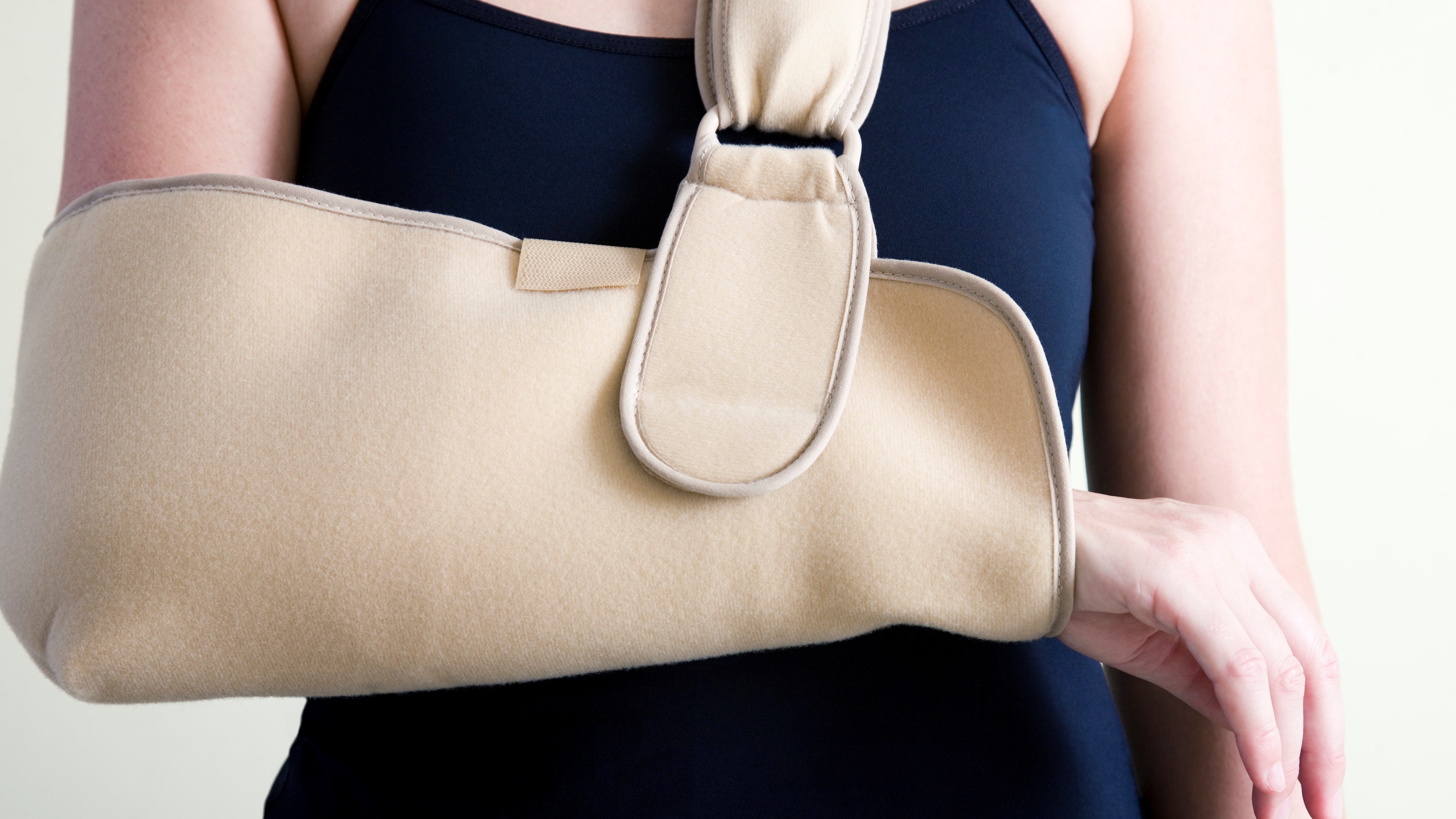
3. It won't look that bad forever
Because I had also suffered quite a bit of road rash, I was all bandaged up for a few days, and when I first took the dressing off, I was absolutely horrified at how bad my shoulder looked. I can pretty vividly remember my 27-year-old self seeing a veritable Quasimodo in the mirror and fretting about never being able to wear a dress in public again.
These days, if you look very closely, you might notice that my right shoulder is a little lower than my left, but basically it looks completely normal and I wear dresses all the time.
4. It’s good to get back out there (on foot)
My confidence took a serious knock after my crash and it was another couple of years before I got back on a bike, but getting back out there is key to healing. You won’t be able to go rock climbing or do yoga straight away, of course, and you’ll be a bit nervous of falling again, so you might want to avoid faster-paced sports like cycling and skiing, while running is a little difficult until the pain and swelling go away.
That said, as far as soft tissue injuries go, a shoulder separation isn’t the worst one you can have. Pretty quickly, I got bored of feeling sorry for myself, pulled my hiking boots on and hit the trail, and getting out in nature was really therapeutic for me, as well as a way to maintain my fitness. Stick to well-maintained trails at first to reduce your chances of falling, and make sure you know how to adjust your backpack properly, so that your hips and legs are taking all the weight.
By 2013, I was back on the bike training for my first triathlon, which I completed without any crashes, and these days I ride my bike any time I can.
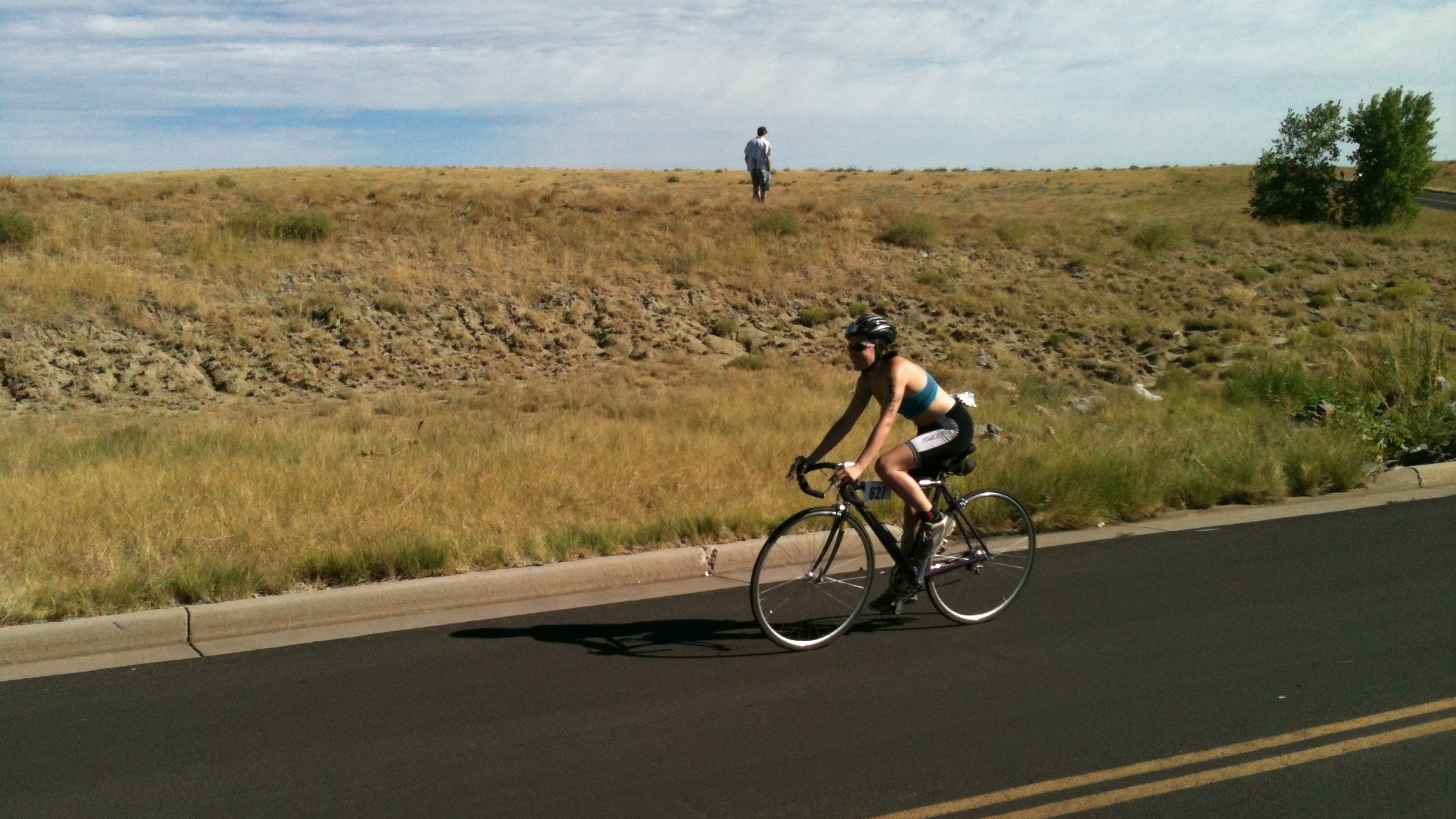
5. You might need help
Unless you paint ceilings for a living, a separated shoulder isn’t super debilitating, especially once the initial pain and swelling goes down. After the first week or so, you’ll get rid of the sling and be able to perform basic household tasks. That said, I definitely struggled with certain movements for quite a few months, such as stuffing my sleeping bag into its compression sack when I went camping. Make sure you’ve got a patient adventure buddy that can help you with these pushing/pulling actions for a little while.
6. You might get stronger
Separating your shoulder will definitely affect your strength, but if you’re anything like me, you might find that in the long term, your injured shoulder is stronger.
If you don’t do anything to strengthen your upper body, this won’t be the case, but if you lift weights, or like me do activities like bouldering and yoga, you’ll soon discover that because the ligaments are missing, the muscles surrounding your separated shoulder have to work harder.
In fact, these days when I’m hauling myself up the wall or doing yoga postures like side plank, I notice that my right shoulder is significantly stronger than my left.
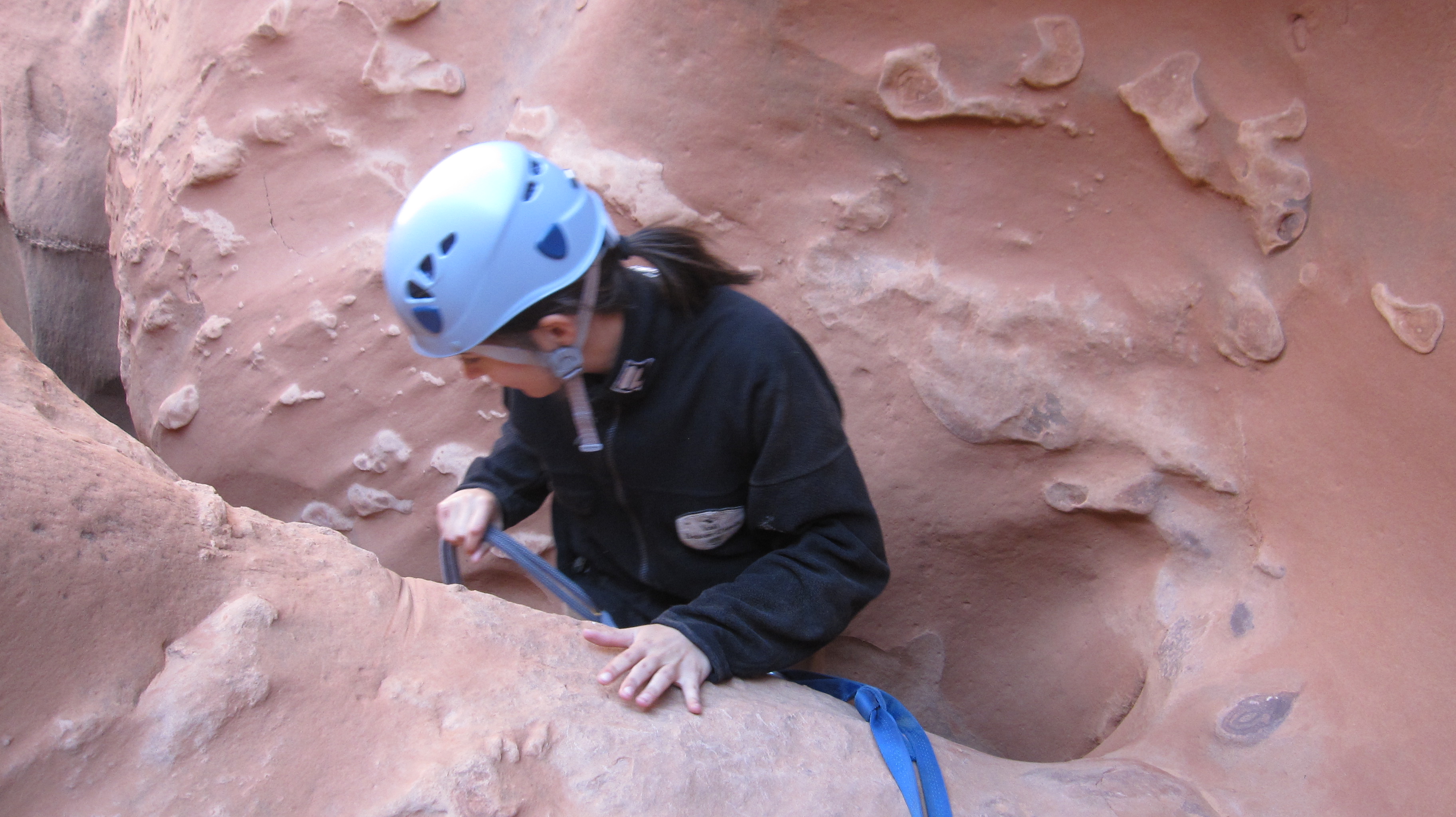
7. Do your physio
This basically goes for any injury, but it’s worth seeing a PT a few days after your injury and following their protocols. Assuming you don’t have any complications, you probably won’t need more than one or two visits. The exercises will be simple, such as tying a resistance band around a doorknob and pulling your hand across your body, but they really work.
For quite a few months, I was unable to adduct my right shoulder, so when I held out my arms in front of me with my elbows bent, I couldn’t bring my two forearms together. This was mostly challenging for yoga and then climbing, but if left unattended to, it could affect everyday actions like getting dressed or unlocking a door.
By faithfully doing my exercises each day, however, I soon regained full mobility of my right shoulder and these days, it actually has a greater range of motion than my left shoulder.
8. You’ll (probably) forget all about it one day
Separating your shoulder sucks, but if it’s the worst injury you ever have, you might actually be pretty lucky. Having torn my ACL skiing since then, I look back at my shoulder separation and wonder why I was so upset. It’s definitely true that some people do still have pain 10 years later, according to one study, and arthritis is a possibility, but it’s also common to make a complete recovery.
In the grand scheme of things, it was a minor setback for me and these days I’m basically either standing on my hands or hanging off a climbing wall most days, and I honestly never even think about my shoulder anymore.
- Best first aid kits: be prepared with emergency supplies







